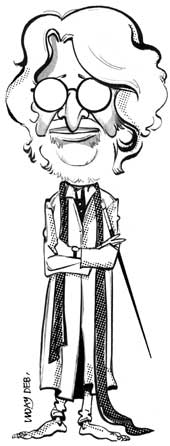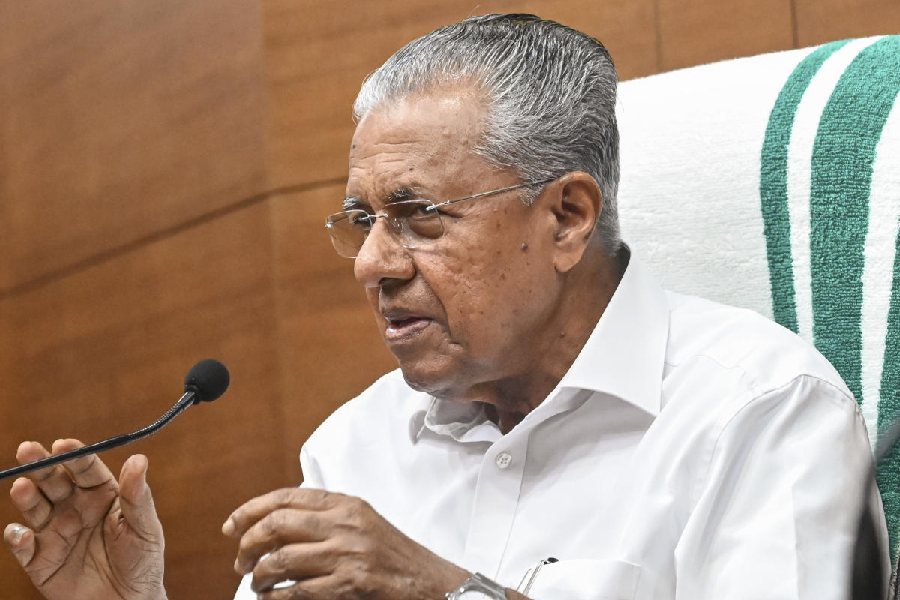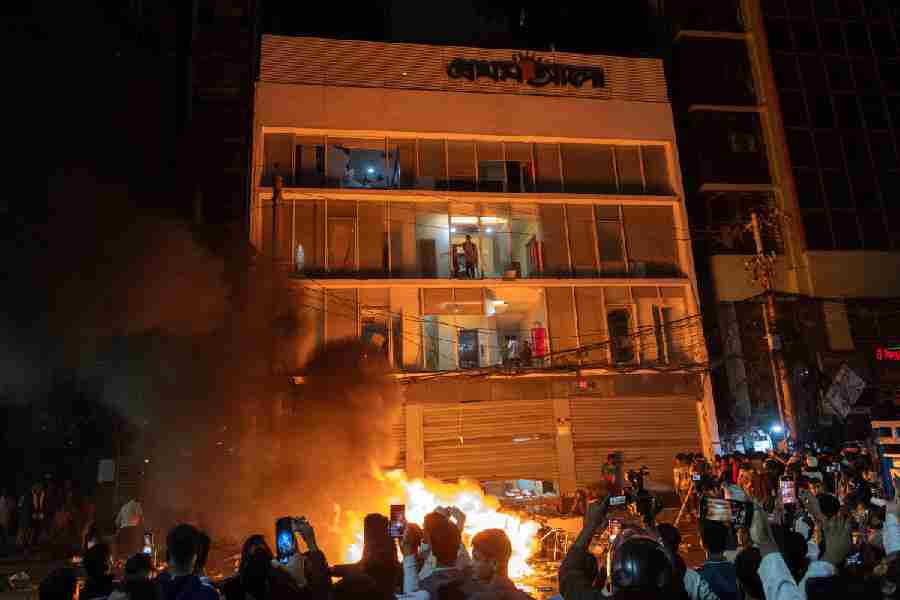 |
It was the summer of 1956 and a tall Indian man was driving from Rome to Milan, then to Zurich and across the Swiss Alps to Germany. His destination was the Czech border where a young lady was waiting for him. The man was driving barefoot. He had just bought the car, learnt to drive in 15 days and taken to the road. In the back seat was a white wedding gown. His friends had refused to go with him, because they did not trust his driving. But he would not give up. He drove continuously for 14 hours, negotiating the hairpin bends of the Swiss Alps in the days before tunnels were built through the mountains. The man was Maqbool Fida Husain, India’s most famous artist. The lady waiting for him was Maria Zurkova, a 20-year-old Czech woman. Husain was 41, in love, and going to get married.
He had met Zurkova a few years before when he had an exhibition of his paintings in Czechoslovakia and they had both fallen in love. “I took 20 days (to fall in love),” confessed Husain mischievously. “For her, it was instant.” At the end of the exhibition, Husain gave her all 80 paintings and left for India. Some years later, he would drive over the Swiss Alps to meet her.
Husain is in a mood for nostalgia. We are sitting in his penthouse studio as he paints a canvas of Anarkali and Salim. Outside, the London skyline is a shade of dappled grey. The penthouse itself belongs to Salman Asif, son of K.A. Asif, director of Mughal-e-Azam, and Husain is a regular guest here. A large poster of the film starring Madhubala and Dilip Kumar hangs in the hall. The film is the latest inspiration for Husain who is creating a series of 40 paintings on the theme of Mughal-e-Azam and the romance of Prince Salim and the courtesan, Anarkali.
“It is one of the greatest love stories of the world,” says Husain. “I’m painting the series through the eyes of the sculptor, the santarash, who created the statue of Anarkali.” Perhaps it is the painting of the two lovers and the memories that it evokes that has prompted Husain’s journey into the past.
Only a few weeks ago, I had seen Husain paint live with Shah Rukh Khan at Bonhams auction house. On that occasion, the performer Husain was in full flow, wowing the invited audience of noisy champagne-sipping Indians, and beaming delightedly as the price of his painting (one of the same Mughal-e-Azam series) soared to £160,000. But the Husain in his studio is a different persona, gentle and reflective, a man who wants to talk about love rather than commerce, and art rather than the controversies that have persistently dogged him.
The 92-year-old artist has been painting since six in the morning and had lost all track of time when I walk in at 11. Suddenly it seems totally irrelevant to talk about the petty machinations of Hindu fundamentalists pursuing him for his depiction of nude goddesses. They have happily left him unscarred. We rush through the usual questions of pending legal cases and living in self-imposed exile in London and Dubai. Husain dismisses them with a resigned wave of his hand. “Art has always been controversial,” he says. “When the Impressionists made their work, people were horrified. It is a question of understanding. I am not concerned about it.
“I have lived abroad for several years. I can paint anywhere. There is no question of exile. I can go home any time. They are not stopping me… Let’s talk about art instead,” he pleads, bored with the Hindutva brigade.
Born in the temple town of Pandharpur in Maharashtra in 1915, Husain grew up in the shadow of the Vitthoba temple and the sculptures of the Hindu goddesses that were later to inspire his paintings. His mother died when he was a year and half, leaving him with no image or recollection of her. She had never been photographed or sketched. “It was a void, that I always tried to fill,” he says. His Madhuri Dixit paintings were part of this quest. To him, she was Ma-adhuri (half-mother), as Husain found in Dixit the perfect representation of Indian womanhood.
Inspired by European film-makers like Luis Bunuel, Vittorio De Sica, Federico Fellini and Indian film-makers like Satyajit Ray and Ritwik Ghatak, Husain had always craved to make films but never had the money to follow his dream. “So I painted,” he says simply. “It was what I could do.”
I ask him about Italian film-maker Roberto Rosselini and their friendship. It sets off a train of thought.
It was Husain’s fascination with films that led him to meet Roberto Rosselini. The Italian film-maker was invited by Nehru in 1956 to make a documentary on India. Husain travelled with Rosselini all over India — from Bombay to Benares and Mysore — and was soon to play a key role in an event that was making headlines all over the world. Rosselini had fallen in love with a married Bengali woman, Sonali Dasgupta. Given that he himself was married to Ingrid Bergman at the time, his affair with Dasgupta, who was half his age, had the western press hounding him in India.
“He admired my work and I admired his, and we became great friends,” says Husain reliving the heady days of 1956, when he was protecting Rosselini and Sonali Dasgupta. “Rosselini would drive five hours from the interiors of Mysore just to reach a phone booth to make a call to her in Calcutta. An American newspaper offered me $10,000 for a photograph of the two of them together. But I wouldn’t dream of betraying my friend.”
Husain played a crucial role in getting them together. One night he booked a first class coupe on the Frontier Mail from Bombay to Delhi. Accompanying him with her head covered was Sonali Dasgupta, travelling as Mrs Husain. Avoiding the paparazzi, Husain escorted Dasgupta to Delhi and set up a meeting with Rosselini. Soon the couple left for Rome and were married.
“Rosselini was in love with Sonali, an Indian woman, and I was in love with Maria, a European,” says Husain. “He said he would do anything to help me. Of course, we were both married. He was married with four children. I was married with five children. But we were all madly in love!”
Eventually Husain’s wife gave him permission to marry Maria and he set off from Rosellini’s house in Rome to win his bride. “I bought a wedding gown for her and a small car. I was really excited. I wanted to be a dulha. I asked my artist friends in Paris to come with me as my barati. But they were too scared to drive with me! Finally I went alone. Maria was from a communist country and could not leave, so I had to go there. She came to the border to meet me.”
But Maria broke Husain’s heart. The young Czech girl told Husain that they should not get married and that it would never work, as she belonged to East Europe and he belonged to India. Husain left Czechoslovakia feeling angry and devastated. “I did not speak to her for several years. I was so hurt,” he recollects.
But the story had its ’ Henry ending. Forty-six years later, while on a trip to Melbourne, Husain met Maria again. “She greeted me as if the years had not passed at all,” says Husain mistily. She was married with three children. And in her house, I saw all the 80 paintings that I had given her. She had not sold a single one, even though she often needed the money.”
Maria Zurkova has now said she wants the paintings to go back to India where they belong and has gifted them back to Husain. The 80 paintings in the Maria Zurkova collection will be donated by Husain to the Calcutta Museum of Modern Art when it opens in the city. “I thought the Calcutta museum would be the best home for the works,” he says. Art lovers of the city will have a share of the summer of 1956 and the passions that ruled four hearts.
I leave Husain in a dreamy mood. He gives me a copy of his limited edition book Art and Cinema. “For reminding me of those wonderful days,” he says happily. I leave the apartment clutching the beautifully illustrated tome inscribed to me. “These are my 80 paintings”, I tell him jokingly. “I will also keep them forever.” He smiles sweetly, almost serenely. His thoughts are in Prague in the spring.










